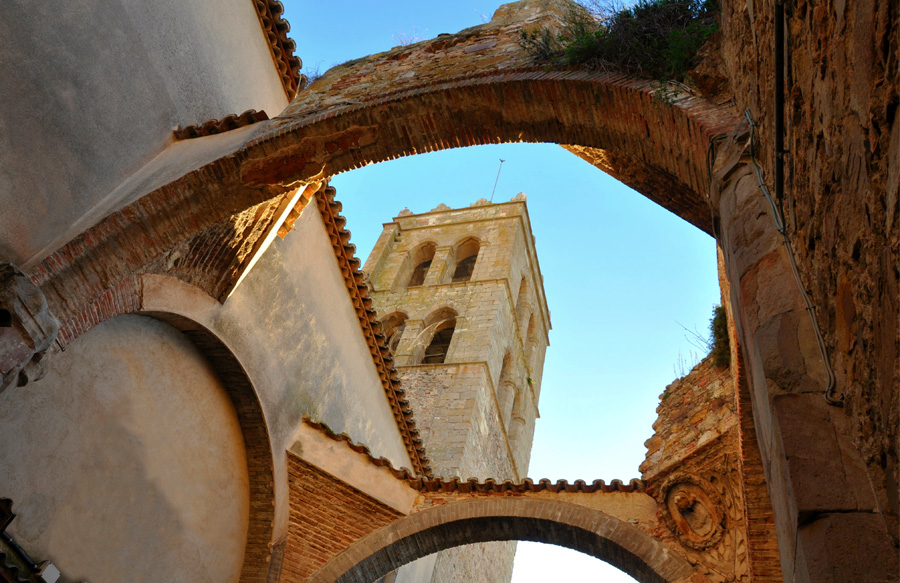Monumental Heritage of Blanes
Blanes is often thought of as a territory full of landscape charm, a gateway to the Costa Brava, a tourist town, a beach destination… None of this is false, in fact, it is very honest to quote Blanes as one of the most beautiful places of the Catalan coast, simply, this is only a partial vision of all the potential that the population of Blanes hides inside!
Human expression, since time immemorial, has materialized in different monumental works that have left a trace of its historical truth. Castles, churches, family houses, hospitals, fountains, convents… All are buildings that speak to us and tell us a specific moment in history. Knowing and contemplating them, allows us to make that moment present, understand the motivations of those who created them, and incidentally, make our own reality more understandable. Thus, in Blanes, the passage of time has been leaving material traces that are the most authentic foundations with which the city has been erected. Today, Blanes offers a monumental heritage worthy of being preserved and contemplated.
In this way, we can go back to Medieval times to find the first monumental vestiges. From the 12th century it is the Castell de Sant Joan (Saint John’s Castle), a Romanesque-style castle that today has taken value as an unbeatable viewpoint of the city and the coast of Blanes.
The Catalan Gothic also left important traces in the city that we still have. The Font Gòtica (Gothic Fountain), on the carrer Ample (Broad Street), is a perfect example. From the fifteenth century, it is a unique fountain, octagonal, with beautiful sculptural details that represent the style of civil Gothic. Very close to the Font Gòtica, and still on the carrer Ample, Blanes retains three turns of stone from the 15th century that today are two stores, and the other gives way to a street, allowing say hello to San Bonós and San Maximià. It is a sample of how the gothic stone is integrated into the urban structure of Blanes. In the place of the Church, other vestiges of the Catalan Gothic can be contemplated in the Església Parroquial de Santa Maria (Parish Church of Saint Mary), of the XIV-XV centuries, and of the same time, and forming a whole with the Church, in the facade of the Palace of the Viscounts of Cabrera. And to see a Gothic-style family house in Blanes, the visitor can go to carrer Nou (New street), where you can find Can Girbau, dating from the fifteenth century, and has a lobed conopial window, typical of the Gothic style, intact.

A little later in time, towards the 16th century, we must place the monumental complex of El Convent de Blanes, exceptional beauty due to the fact that it is located at the Punta de Santa Anna, just above the Mediterranean Sea, creating an incomparable environment. What was once a monastery of Capuchin monks, is today a protected and declared building of monumental and landscape interest.
The remains of the Baroque in Blanes take us back to the carrer Ample, to reach Can Balliu, which dates back to the 17th century with its characteristic ornate portal. Also of the Baroque, we have in Blanes the Ermita del Vilar (Hermitage of Vilar), a charming church with a marine theme located about four kilometers from the town center.
The seventeenth century also left in Blanes an emblematic building, representative of another artistic movement: the Neoclassicism. It is the Town Hall or Casa de la Vila, which has an entrance from the Plaça dels Dies Feiners (Weekdays Square), and from the Passeig de Dintre (Inside Promenade).
During the nineteenth century, Catalonia woke up artistically with the spirit of Modernism, a style that became an emblem of artistic freedom with an unconditional love of nature often represented in its constructions. Blanes, as in many other Catalan territories, has remarkable samples that are perfectly preserved. The Hospital de Sant Jaume, in the street M. Jaume Arcelos, attests to it, and the Can Tordera house, in the Passeig de Dintre, too.
Answering Modernism, a new artistic style was born in Catalonia that wanted to recover Catalan sanity, Noucentisme, which left a mark in the form of majestic buildings of great beauty throughout the territory. In Blanes, there is a great sample: the Casa Burcet, on Roig i Jalpí Street; the Casa Saladrigas, on the Passeig de la Maestrança; Ca l’Orench, on carrer Ample; the Casa del Poble, in the Passeig de Dintre, or the Marimurtra Botanical Garden (Jardí Botànic Marimurta) in the Passeig de Carl Faust. All of them are buildings that recall a recent artistic past in the city of Blanes.
The monumental heritage of Blanes extols the city, which has been creating an urban framework that welcomes it, gives it relevance and makes it present so that it can tell its historical truth to those who visit the city.


